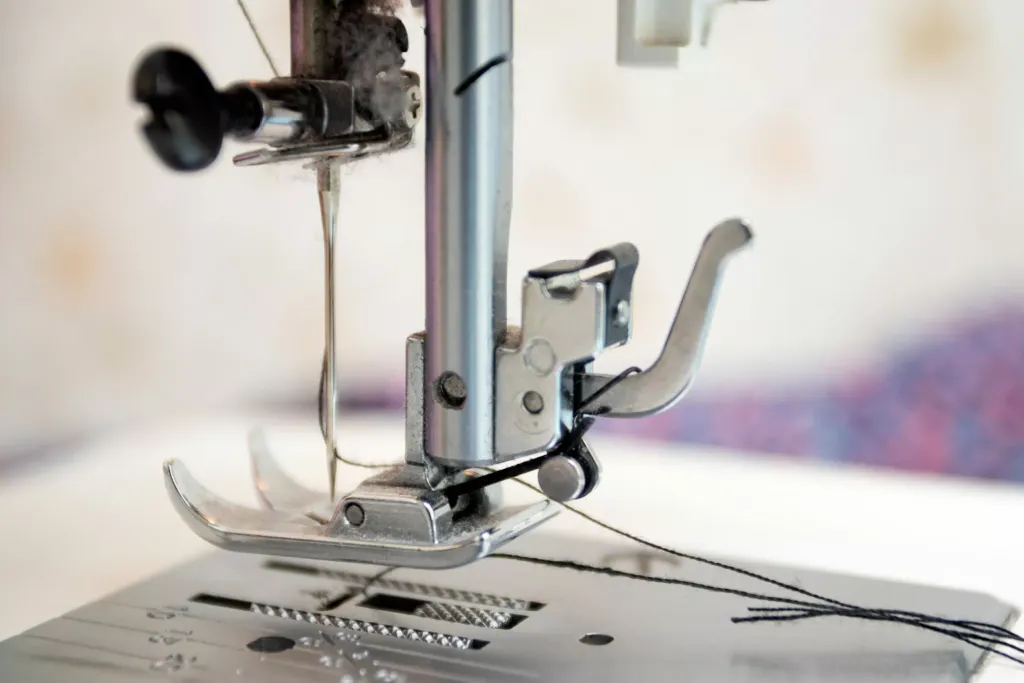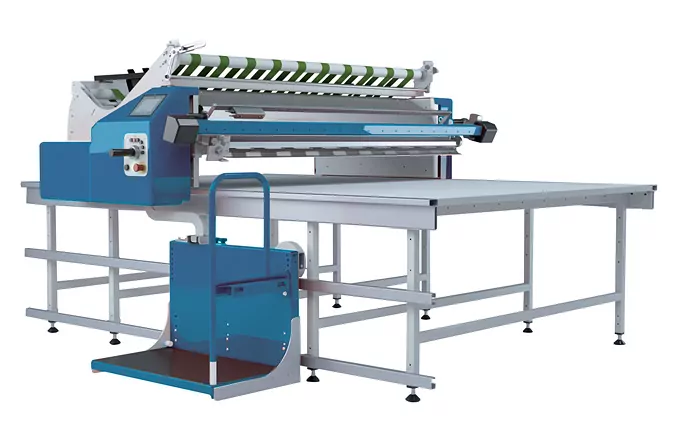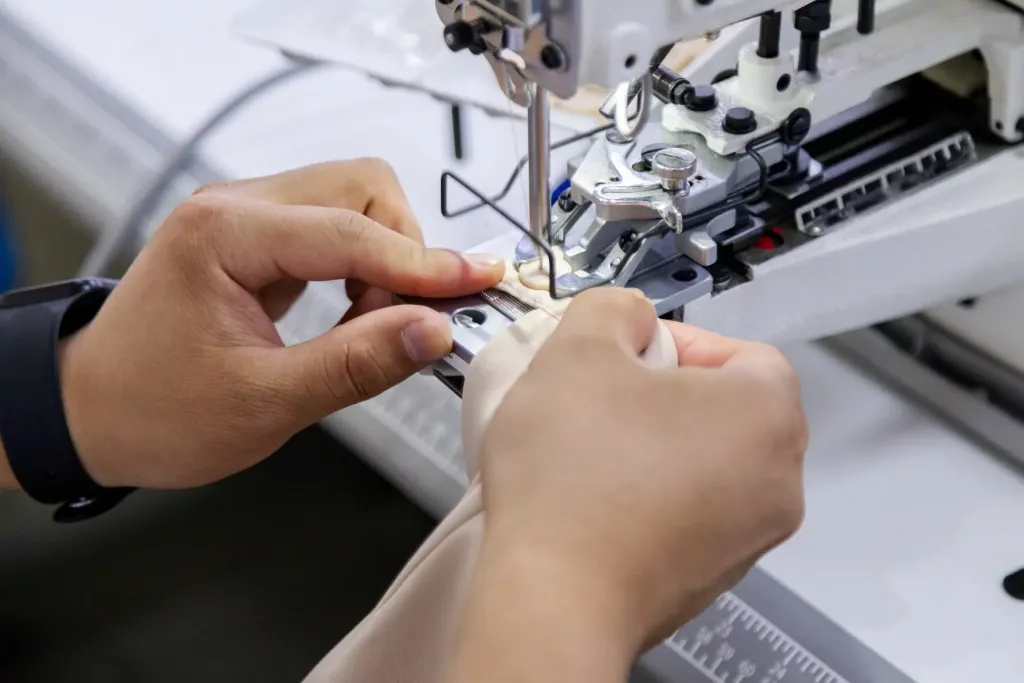Summary:
- If you want to ensure excellence and agility in your fashion collection production, textile machines can help you achieve your goals;
- From improved safety to time optimization and faster deliveries, there is a wide array of machines available to meet your company’s needs;
- Rely on the power of technology to give your customers the best experience. Try Audaces360 multi-solution for free and discover the benefits!

If your company strives to remain competitive in the clothing industry, it’s essential to stay up to date with the latest trends and advancements in the industrial sector.
Investing in the right textile machines is key to developing better products and delivering what customers need.
In this blog post, we will discuss the importance of utilizing textile machines in the production process, the necessary equipment, and the associated benefits.
Read on to learn more!
Sumário
In which manufacturing processes should textile machines be used?
The use of textile machines in the manufacturing process can bring significant benefits to garment and collection creation.
From the initial steps of modeling and cutting to the final stage of spreading, these machines can make the whole production more efficient and agile. Let’s see how!
Cut
The cut is a crucial part of the textile industry, as it requires precision and accuracy when overlapping patterns on a desk. A cutting machine can make this process much more efficient.
Spread
For spreading, an automatic spreader to cut the fabrics is the best choice, once this way they are aligned and stacked, which makes the whole activity faster, safer, and more economical.
Overlock
Another essential machine in the textile industry is the overlock. This equipment is responsible for finishing the edges of the pieces that have already been cut, preventing fabric from fraying .
The overlock can also be done at the end, along with the sewing stage.
This is because, depending on the type of fabric, the piece can be damaged with if the overlock is done right after the spreading process.
Sewing
Afterwards, we have sewing, one of the most important stages in the clothing manufacturing process. It is when pieces are stitched together and, for this reason, this step requires textile specialized textile machines with different functions on the production line.
Finishing
In this task, zippers, buttons, seams and unique cuts are added by hands, in addition to other accessories.
After the entire manufacturing process, it is important that the pieces undergo quality control so that the products reach customers as planned.
Finally, it is necessary to label and store them correctly before going for distribution.
What is the impact of textile machines in reducing manufacturing errors?
For any clothing company looking to streamline their processes, optimize time, and improve the quality of their product, investing in modern and cutting-edge textile machines is essential.
This equipment can not only provide various cost-saving benefits, but also eliminate errors, helping to avoid rework.
Thus, in addition to bringing various types of savings, such as the reduction of inputs for testing, fewer materials are used improperly when this technology is employed.
The investment in textile machinery translates into advantages such as the elimination of risk, improved profitability, and increased production efficiency.
By following processes with a standard that aligns with textile sector norms, the quality of the garment can be improved, and employees and the environment can be safeguarded.
In this sense, textile machines can help fashion businesses produce more, keeping up with consumer demand while still optimizing inputs with automation.
Learn more: Why consider sustainable consumption and production for your company?
What are the essential textile machines?

Are you ready to take your garment business to the next level? Now that you know the importance of having good textile machines, it’s time to find out which equipment is key to improving your operations and achieving success.
Check out some essential technological machinery and choose which one is worth considering for your company:
Sewing machines
Sewing machines are the most used textile machines, even by those who do not work in the clothing industry.
There are a variety of types, each with its own unique function. Among them, we can list:
- Industrial straight machines;
- Interlocks;
- Overlocks;
- Zigzag;
- Trimmers;
- Bartacks;
- Stitching machines.
As each machine carries out a different job, you need to know what your business needs.
Therefore, make a survey of the types of pieces that will be made in the coming months and invest in the equipment that makes the most sense for your business’ scenario.
Pattern digitizing table
If you’re still making patterns by hand and need to deal with a lot of reworks on a daily basis, a pattern digitizing table can be game-changing for your production process.
It features intuitive tools and a wizard for scanning large patterns, as well as a frame for digitizing patterns.
By taking just one photo, you can digitize paper patterns and create digital bases that you can modify without losing the original model.
Spreader

The spreader is the perfect machine for businesses that want to save time and resources while optimizing their manufacturing process.
There are two types of spreaders: manual and automatic. The choice between the two of them will depend on the size and type of business you have.
The automatic spreader is sure to speed up the production of your items. It comes with a programmable feature that can accommodate multiple spreads for the same day, allowing you to increase the dynamism and autonomy of your processes and enhance the quality standard of your products.
Moreover, a spreading table is super versatile and can be used for a variety of purposes. It is capable of handling different sizes of spreads, also performing functions such as insufflation, meaning that your business can expand its production according to its layout.
Cutting machine
There are several types of cutting machine available in the market. From simple sizes to intricate shapes, cutting machines play an integral role in the textile industry.
An automated cutting machine, mainly a cutting room, is designed to connect people and equipment in a 100% secure and digital way.
The cutting machine also ensures that production is timed, aligned with the company’s objectives, and providing accurate data for decision-making.
Additionally, there are machines that can cut large varieties of designs in fabrics and other flexible materials, quickly and economically, enabling continuous production.
Ultimately, it all depends on your needs and budget. With so many options of textile machines, you’ll be sure to find the perfect one for you!
Learn more: Learn why regular maintenance is crucial for fabric cutting machines
Button sewing machine

Having a machine to sew on buttons or buttonholes can make clothing production processes easier and more efficient.
This machine can make the difference in your clothing manufacturing, offering agility and streamlining this crucial step.
Fusing machine
The fusing machine is an essential piece of equipment for the clothing industry, providing pieces with greater quality and helping to optimize various stages of production.
This equipment is what your clothing business needs to provide more strength and support to the structure of fabrics.
There are many types of fusing machines to help in the quality procedure of your company, so you can choose the one that best meets your needs.
Line plotter
The line plotter is a type of machine that prints drawings with large dimensions and can be used for different types of materials. It is ideal for companies that need to produce large prints with impeccable quality.
In clothing manufacturing, it is used to print intricate patterns and inserts for fabrics, saving both time and resources.
With this machine, businesses can be sure to make perfect lines, achieving exceptional results that will help them stand out from their competitors.
Conclusion
The clothing business is constantly evolving and it’s essential to stay on top of the latest innovations to ensure you’re producing the highest quality product.
With the right textile machines and tools, you deliver an excellent job that meets the expectations of your customers.
Are you interested in learning more about how technology can be applied to fashion tailoring? Download our free e-book to get all the details:
FAQ
Textile machines must be used throughout the entire production process, from the creation of the pieces to the finishing touches. They provide efficiency and speed to the manufacturing.
Absolutely! Investing in the latest and most advanced equipment available is key to avoiding reworks, allowing you to get the job done right the first time.
There are several types of textile machines, but the main ones are: sewing machines, pattern scanners, spreaders, cutting machines, buttonhole and button sewing machines, fusing machines and line plotters.










